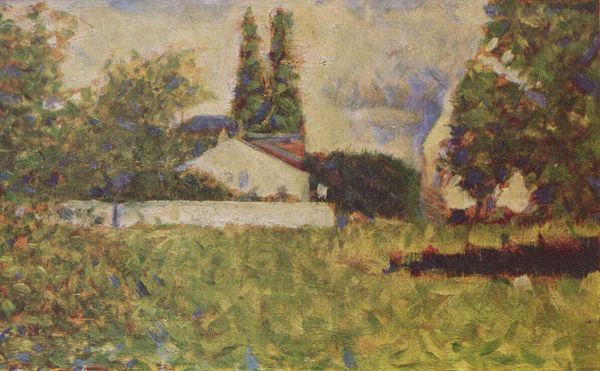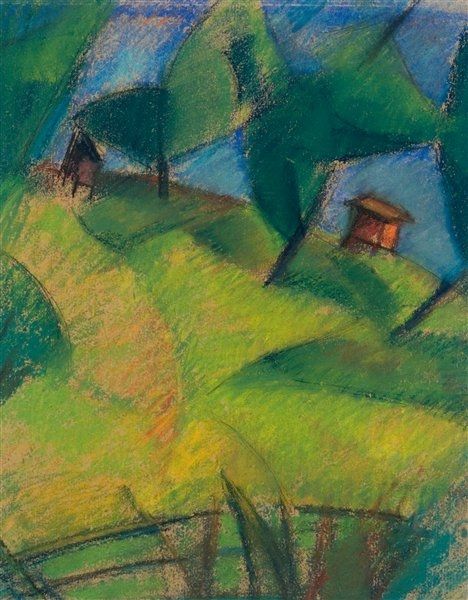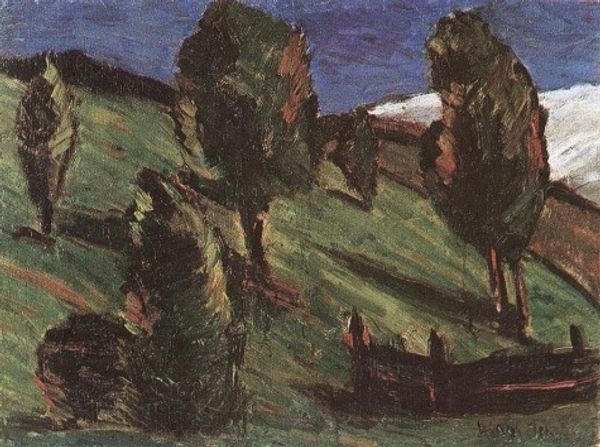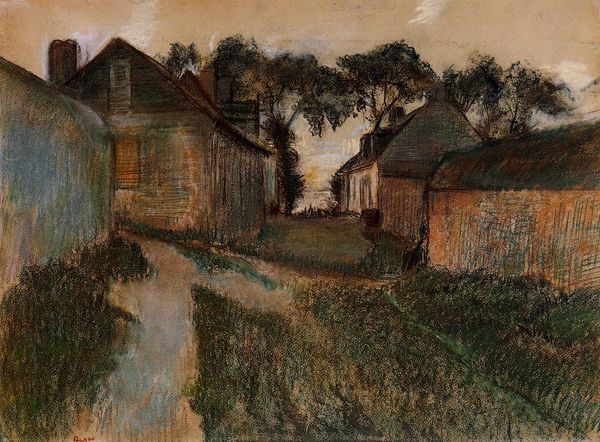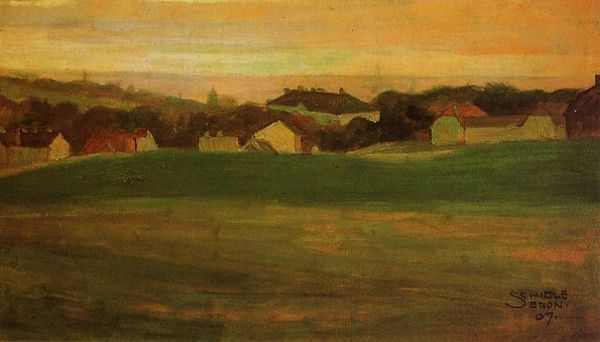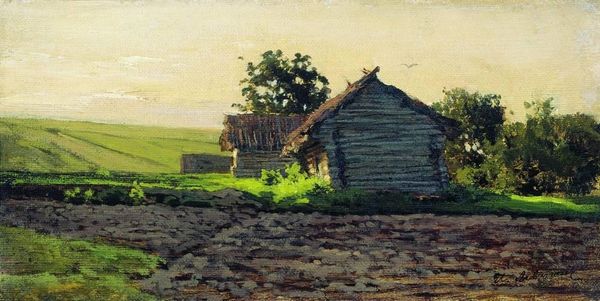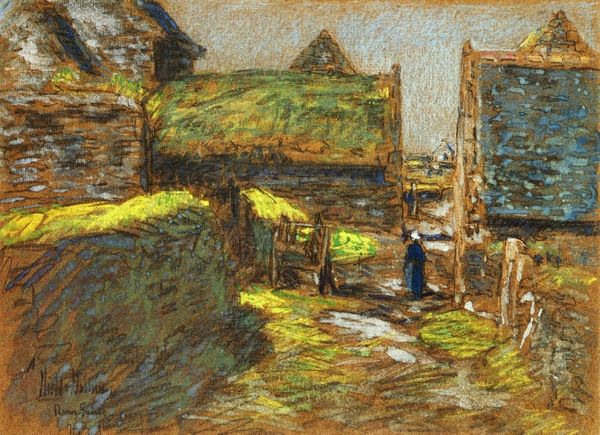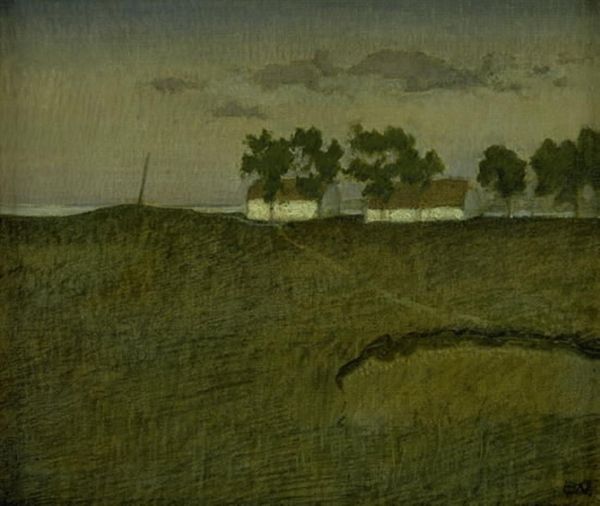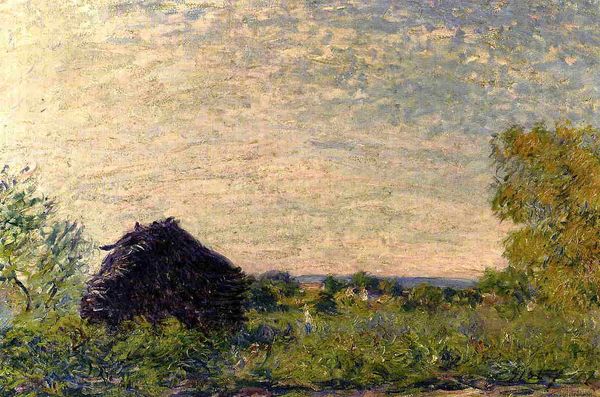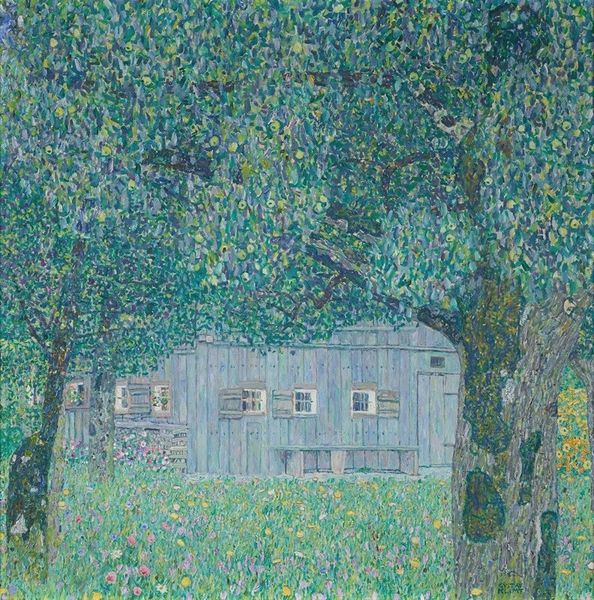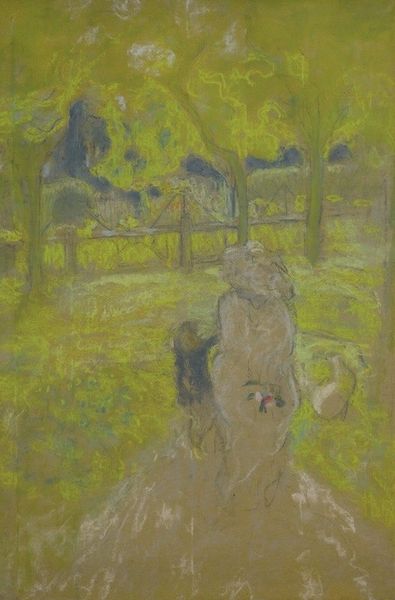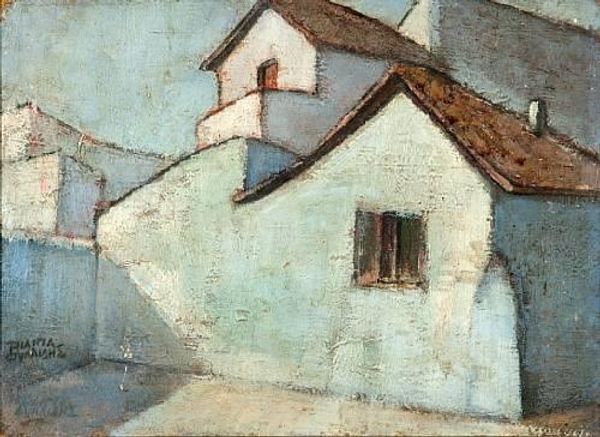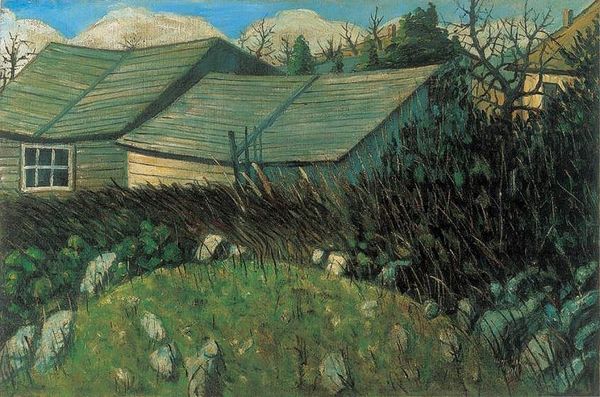
tempera, painting, architecture
#
tempera
#
painting
#
landscape
#
symbolism
#
architecture
Copyright: Public domain
Curator: Editor: Here we have Nicholas Roerich’s “Study to ‘Building a City’,” made in 1902 using tempera. I am really struck by how the colors make the architectural forms look almost… eroded, or emerging from the landscape itself. What are your thoughts on this work? Curator: Well, immediately, I consider the materiality of tempera. The artist's decision to use this quick-drying medium would affect the image's smoothness and allow for layering. Roerich’s color choices are similarly fascinating. These hues—blues, greens, earth tones—seem almost alchemical. Editor: Alchemical… in what way? Curator: In the sense that they evoke a sense of transformation. We have stone and vegetation interwoven. I believe Roerich saw construction not simply as a physical process, but as a kind of alchemy, transmuting base materials—stone, earth, labor—into something more enduring. These architectural elements, especially with Roerich's interest in pre-history, can even invoke a critical gaze at the politics and labor practices involved in this seemingly innocent act of city building. Editor: I hadn’t thought about the social aspect before. I was really drawn in by the look of the painting, almost dreamy with those soft, earthy tones. It’s intriguing to see the layers of labor and political concerns you find within these materials. Curator: And what’s also striking is Roerich’s departure from oil paints, the usual artistic currency of the time, and turning towards tempera which has its own specific properties that he exploits here. Looking at it this way, the painting becomes much more than just a dream-like image; it turns into an exploration of materials and of labor and of its place in cultural history.
Comments
No comments
Be the first to comment and join the conversation on the ultimate creative platform.
